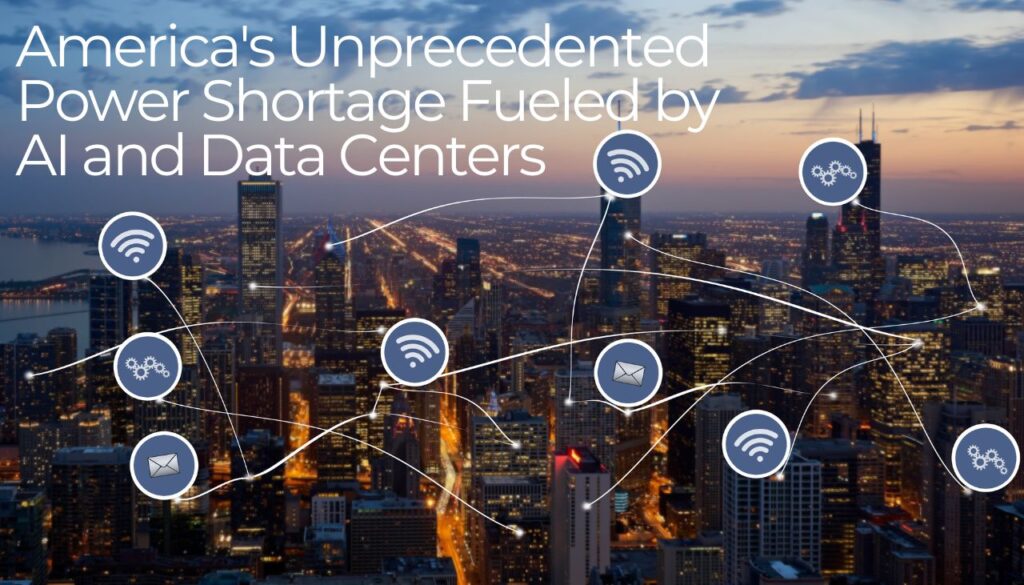On This Page: [hide]
The United States is facing a monumental challenge: a looming power shortage. From the data centers of Northern Virginia to the clean-tech factories of Georgia, the nation’s electricity grid is straining under the weight of surging demand, as revealed by a recent Washing Post story.

The Struggle to Keep Pace with America’s Growing Energy Appetite
In Georgia, industrial power consumption is skyrocketing, with projections for the next decade dwarfing previous estimates. Similarly, Arizona Public Service is racing against the clock to strengthen transmission capacity before the decade’s end. Meanwhile, Northern Virginia, Texas, and other regions are grappling with the staggering energy demands of data centers and clean technology facilities, pushing the aging grid to its limits.
The root of this crisis lies in the exponential growth of artificial intelligence and cloud computing, driving the construction of massive data warehouses that literally devour electricity. Crypto-mining, another burgeoning industry, further heightens the strain on the grid. As a result, bottlenecks emerge, threatening both energy suppliers and consumers with mounting challenges.
This power crunch is not just a technical issue. It is sparking debates over who foots the bill for upgrades and how to maintain momentum in transitioning to cleaner energy sources. The situation also jeopardizes the ability to meet ambitious climate goals, hindering efforts to electrify transportation and reduce emissions.
Looking for Alternative Solutions to the Power Shortage
The data center gold rush is reshaping landscapes once untouched by the tech industry. Communities like Columbus, Ohio, and Fort Wayne, Ind., are now battlegrounds for developers vying for grid access. However, the rush for power risks leaving some regions behind, stifling economic development opportunities.
In response to the grid’s limitations, some companies are exploring alternative energy solutions, from off-the-grid fuel cells to geothermal energy. Others are investing in AI to optimize grid efficiency or considering on-site nuclear plants—a testament to the innovative approaches needed to navigate this crisis.
Yet, the path forward is fraught with challenges. Regulatory hurdles, limited federal powers, and inter-state disputes complicate efforts to expand transmission infrastructure. States like Texas face dilemmas over prioritizing power allocations, especially amidst the energy-intensive demands of crypto-mining.
Since the Biden administration prioritizes grid modernization, the urgency of the situation even increases. Without decisive action, the United States risk squandering opportunities for economic growth and environmental progress. It’s a race against time to power the future while protecting the stability of America’s energy infrastructure.
